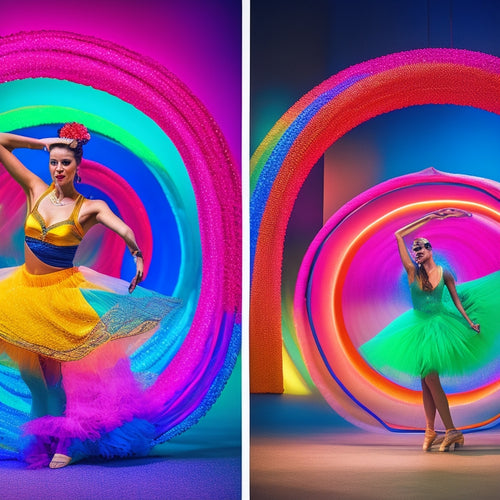
Ballet Tights: A Dancers Second Skin
Share
A Brief History of the Origin of Ballet Tights
Ballet tights have been an essential part of the ballet dancer's wardrobe since the early 19th century. Initially, ballet tights were created for male dancers, providing them with flexibility and support while performing complex moves. Eventually, female dancers adopted this functional garment, which quickly became an indispensable foundation of classical ballet attire. Nowadays, ballet tights cater to the needs of both male and female dancers, often in various styles, colors, and materials.
Identifying the Differences between Ballet Tights and Regular Tights
Although they may visually resemble regular tights, ballet tights are specifically designed to meet the unique requirements of a ballet dancer. Some of the most notable differences include:
- Durability: Ballet tights are made from fabrics that are more resilient than those used for regular tights. This ensures that they resist wear and tear, even under the demanding conditions of a ballet dancer's daily routine.
- Reinforced Toe: To prolong their lifespan, ballet tights often feature a reinforced toe section. This extra layer of fabric protects against rips and snags, especially when wearing pointe shoes.
- Compression: Ballet tights frequently incorporate compression technology, which assists in reducing muscle fatigue and enhancing blood circulation during long rehearsal sessions.
- Moisture-Wicking Properties: As dancers often perform under hot stage lights, ballet tights are designed to wick away sweat and keep the wearer feeling fresh and comfortable.
- Waistband: Featuring comfortable waistbands that ensure a secure fit, ballet tights help dancers focus on their performance without constantly adjusting their attire.
Choosing the Right Ballet Tights for Your Needs
Selecting the ideal pair of ballet tights can greatly impact your overall dancing experience. Consider the following factors when making your decision:
- Type: Depending on the specific demands of your performance, you can choose between footed, footless, convertible, and stirrup ballet tights. Each type offers its unique advantages and versatility.
- Material: Common materials for ballet tights include cotton, Lycra, microfiber, and nylon. While cotton tights provide a soft feel, they may not be as durable as other options. Microfiber and nylon tights often offer better elasticity and longevity.
- Size: Ensure an optimal fit by consulting size charts provided by the manufacturer.
- Color: Ballet tights come in various colors, with the most popular being pink, black, and nude. Select a shade that matches your skin tone or is required by your dance school or company.
How to Properly Care for Your Ballet Tights
To maintain the beauty and longevity of your ballet tights, follow these care guidelines:
- Wash your tights after each use, either by hand or in a gentle machine cycle using cold water and mild detergent.
- Avoid using bleach or fabric softeners, as they can weaken the fabric and reduce elasticity.
- Hang your tights to dry, as using a dryer can cause shrinkage or damage the fibers.
- Store your tights in a cool, dry place, away from direct sunlight and abrasive objects.
Investing in Quality Ballet Tights for Enhanced Performance
As a dedicated ballet dancer, wearing high-quality ballet tights can significantly boost your confidence and overall performance. By understanding the unique features of ballet tights, selecting the right pair, and practicing proper care, you can ensure that your tights provide you with the support and style you need during your dancing journey.
Related Posts
-

Dance Props to Take Choreography to the Next Level
Dance props are your secret weapons for altering choreography into a breathtaking masterpiece. They breathe life into...
-

Dance Maestro Zoe Rappaport Steals the Spotlight
Zoe Rappaport's illustrious career has cemented her status as a visionary Maestro, driving innovation in movement dir...
-

Captivating Insights: Maos Last Dancer Analysis
Li Cunxin's memoir, Mao's Last Dancer, is a compelling narrative that delves into the intersection of art, identity, ...


